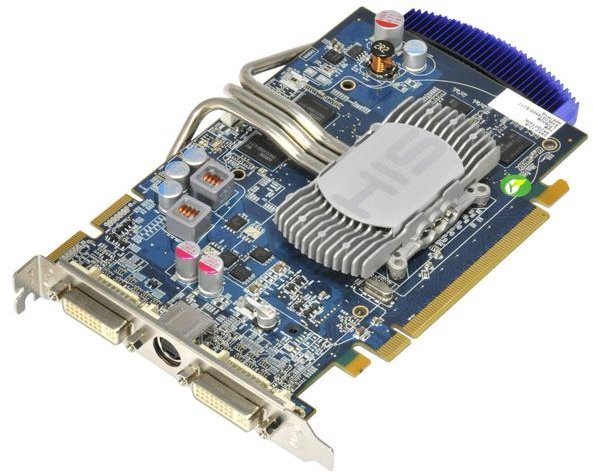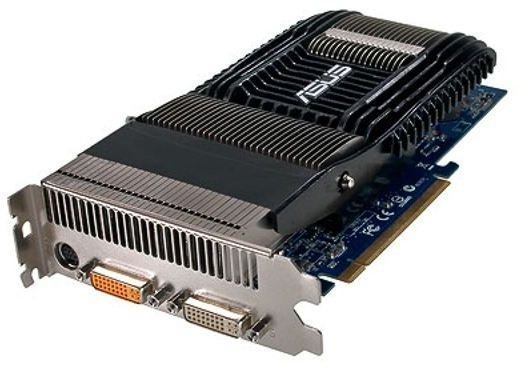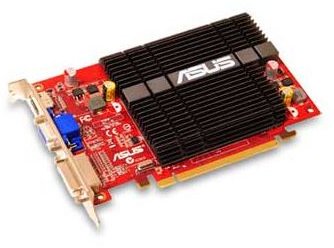The Best Passively Cooled HTPC Cards: Radeon 4350
Passive-Aggressive
In both market share and mind share, passively cooled video cards are not popular. Very few are available to buy, and those that are available are not reviewed as often as other video cards. This is a problem, because passively cooled video cards, unlike most video cards, are a significant change from the reference design. This provides the opportunity for the vendor of the card to screw things up, resulting in a product that crashes constantly or dies tragically young. But despite the risks, there are situations where passively cooled cards are a good idea. GPU fans are a major source of PC noise, particularly in HTPCs. Buying a passively cooled card means that there is no droning whirl that must be tolerated.
The three cards presented below are good choices for passively cooled cards because they have proven themselves. They cover a range of applications, but all have been well reviewed and will be stable as long as they are kept in a temperate environment.
ASUS Silent Series Radeon HD 4350
The tiny, cheap Radeon 4350 is actually easy to find with a passively cooled GPU. It is a small card with lower power consumption, targeted towards those who have only Intel integrated graphics and need an upgrade that lets them run Vista Aero and watch video without choppiness. For these tasks, and even for running games like World Of Warcraft or The Sims, the Radeon HD 4350 has more than enough power. Make no mistake - although this is a discrete graphics solution, it does have its limits. But since it is priced at around $40 dollars, these limits are fairly clear, and you’ll be more than happy with the card as long as you’re realistic about your expectations.
As said, while the Radeon HD 4350 has many passively cooled options, The ASUS Silent Series card gets the nod because it keeps a very low profile, it has received consistently good reviews, and it provides HDMI out without the need for an adapter. These are minor advantages, but they’re all very important when using a video card in a small, lower power home or office PC. ASUS also has a reputation for quality in its motherboards, and this seems to hold up in its video cards. In my experience, ASUS cards seem better put together than cards from companies like Powercolor or Sapphire.
HIS Hightech iSilence Radeon HD 4670
HIS is a niche manufacture that has a reputation for its

cooling solutions, so its no surprise that an HIS card would end up on this list. In this case, the card getting the nod is the iSilence Radeon HD 4670. The Radeon HD 4670 is a good compromise for those wanting passive cooling, because it does not run so hot that passive cooling solutions are impractical, yet it offers enough power to run any kind of high-def video you might throw at it. It is even reasonably capable in games, as long as you stay away from intense shooters like Crysis.
The iSilence Radeon HD 4670 is a particularly good choice because its cooling solution seems to work very, very well. This is impressive, because while the Radeon HD 4670 is far cooler than the more powerful 48xx series Radeons, it still generates enough heat that a bad passive cooler could result in over-heating. In all but the smallest HTPCs, the iSilence Radeon HD 4670 is a good choice. The only problem is its price. Paying a premium isn’t unusual for a passively cooled cadr that has reasonable performance, and with a price usually hovering around $120 dollars, the Radeon HD 4670 is no exception.
ASUS Silent Series 9600GT

That’s right, another silent ASUS card. As much as I like to diversify the recommendations I give out, in this case I simply could not justify any other card. There are very few passively cooled cards available that have the ability to play games at reasonably high detail and resolution settings. In fact, it seems that passively cooled gaming cards are, as a rule, a bad idea to buy. This ASUS is a rare exception, and that makes it a very good card.
As with all passive video cards, it is important to be reasonable with your expectations. The 9600GT will not play Crysis well with high detail setting on large monitors. However, it will play any Source engine game at high detail settings, as well as virtually any MMORPG or strategy game.
In terms of cooling, it is obvious why the ASUS’s 9600GT manages to buck the trend of passively cooled gaming cards which overheat. It has a massive double-height cooler that spans the entire length of the 9600GT, which is about 8 inches long. Obviously, this is not a card that is going to fit into a slim HTPC, and if you’re building an HTPC it is likely that a Radeon 4350 or 4670 will serve you better, depending on the level of performance you need. But if you for some reason need a gaming machine which is extremely quiet, then the ASUS Silent 9600GT is absolutely the card to buy.
